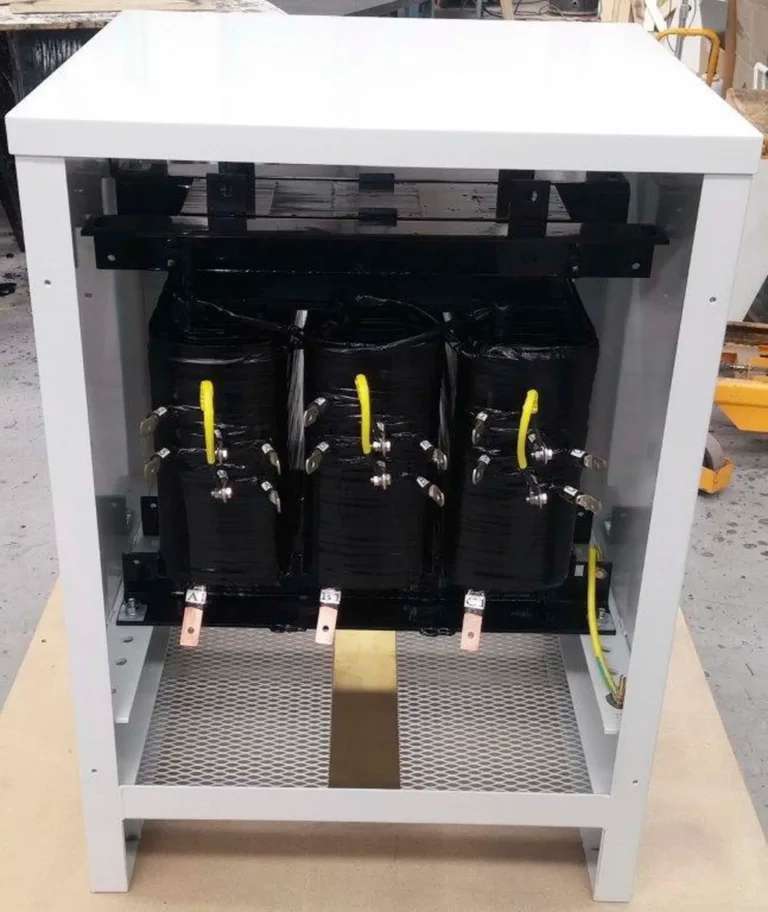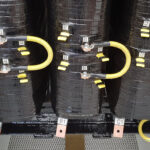The power transformer has been around for quite some time; the first model was designed in 1886 by William Stanley, but since then, things have certainly changed. Although Stanley paved the way for this important electrical component, major advances in technology have made power transformers more beneficial than ever.
Even if you don’t consider yourself a science whiz, it’s normal to wonder about the ins and outs of the commonly used device. In this guide, we’ll cover how power transformers work as well as the benefits that come along with them.
What Is a Power Transformer?
In simple terms, a power transformer is an electrical device that works to transmit electrical power between circuits, all without changing frequency. This component utilises electromagnetic induction to either increase or decrease voltage levels as safely as possible.
Essentially, a power transformer makes it possible to increase or decrease an electrical current’s voltage without changing intensity and overall power flow.
This machine was originally designed for safety reasons, but it has been proven to drastically improve electrical efficiency as well. It’s especially helpful for delivering high-voltage electricity over long distances, which is essential for electrical companies delivering electricity to homes and businesses.
When electrical companies deliver power at high voltages, there’s a high risk of damage for the homeowner. Homes can’t accept a current in this way; a high-voltage current could destroy the entire electrical system, so a power transformer works to reduce the voltage to tolerable limits so that homeowners can stay safe.
Types of Power Transformers Compared
There are many types of power transformers used today, and it’s important to understand the major differences between them. While there are many types to choose from, the most common are isolation transformers and step-down transformers.
Isolation Transformers
An isolation transformer is a type of power transformer specifically designed to provide isolation between the primary and secondary circuits. To do this, it creates a barrier to protect against electrical shock, power surge, and electromagnetic interference from other electronics.
Step Down Transformers
Step-down transformers work to reduce the voltage of an electrical current by transforming the primary voltage into a secondary phase. This type of transformer is best for powering low-voltage devices from high-voltage sources.
To make this possible, a step-down transformer uses two different coils, a primary and a secondary. The primary coil is connected to the high-voltage power outlet source, while the secondary coil is connected to the load.
When electricity flows through the primary coil, it creates an electromagnetic field that induces a current in the secondary coil. Since the secondary coil has fewer turns than the primary coil, it produces a lower voltage than the input voltage.
Benefits of the Power Transformer
The use of power transformers comes with many benefits, including:
- Potential Cost Savings
- Better Quality of Power
- Low Maintenance for Certain Transformers
- Safer Use of Electricity
- Less Noise from Electrical Sources
- Improved Impact on the Environment
Want to know more? Get in touch today for more info on how a transformer can improve your electricity usage!
Next Post
The Role of Isolation Transformers in Data Centers
May 6, 2024Other News

Types of Transformers for Data Centres
SES Isolation Transformers: Reliable Power Solutions If you need stable, clean power to protect sensitive equipment from electrical noise, surges, and interference, isolation transformers are your best choice. At Southern Electronic Services (SES), we specialise in high-quality isolation transformers that deliver exceptional performance and reliability across a wide range of industries, from industrial operations to…

The Best Transformers For Data Centres in Australia
Transformers in Data Centres: Powering Reliable Operations Data centre transformers play a vital role in modern data centres because they regulate and stabilise the electrical power that runs servers, networking devices, cooling systems, and other critical infrastructure. Without the right data centre transformers, facilities are at risk of power disruptions, equipment failure, and increased operational…

